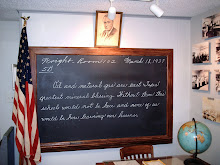2011 Hero Dr. Dwight Peavey Testimonies
Peter Swanson, Former Teacher and Department Chair at Quincy High School
Robert Czerwinski, Acting Fire Chief in Pittsfield, Massachusetts
Peter Swanson, Former Teacher and Department Chair at Quincy High School writes:
I took over as Department Chair of Science at Quincy High School five years ago. I heard Dwight speak to a group of department heads south of Boston. When he finished I raced to speak with him because we had a mess on our hands. The Department had collected chemicals and supplies for I would guess 50 years or more and we had no money for disposal. He told me that he would visit the school, make an assessment, talk to the principal and then give me an action time line.
During the summer he and his crew cleaned up our science facilities and then went to the other High School and the middle schools to clean up there. Dwight and I developed a wonderful professional relationship. I advocate for his program when attending conferences.
Because of Dwight's commitment to Green Chemistry, he helped us get funding for a BeyondBenign summer program. Never in my thirty-year career have I ever been involve in such a powerful program. Half of the students were going into their junior or senior years and the others were incoming freshmen. The impact on those seniors has been incredible as they all headed of to college in some phase of science or technology. One of the seniors is at Boston College as a freshman and chemistry has been a breeze for her. A second girl is at Simmons College and the Department Chair at Simmons told me that they have never had a freshman so on track in chemistry since he has been there. Our incoming freshmen at the time will now be juniors. They are all at the top of the class.
It becomes so simple. Dwight saw a program with potential and he trusted what he saw. He worked hard to fund it and then in his Dwight Peavey way, he stepped back and smiled. He knows what works.
None of this inspiration would have come to me, the teachers in the program or the turned-on students if Dwight hadn't stopped me at the NSTA Convention in Boston a few years ago and said, "Hey Peter, I think we can do something special at Quincy High School for your science program."
Robert Czerwinski, Acting Fire Chief in Pittsfield, Massachusetts says:
“Dwight has been wonderful, top caliber. I first met Dwight at a Massachusetts Hazardous Materials Technical Conference and learned how he worked with schools. His presentation was engaging and entertaining. I could have listened to him all day. We were excited when he came to help Pittsfield Schools. Five members of the Fire Department Inspections Bureau observed his process and we all hold Dwight and his team in the highest esteem. It gave us a better awareness of chemical safety issues in schools – especially chemical storage -- and helped us to become a local resource, getting involved in improving areas of school safety that previously may have gone unnoticed. State regulation require quarterly inspection but now, in addition to checking routine items, we also check emergency showers, check storage cabinets looking for signs of leaks and spills, and look for problems such as materials left out on counters and proper labeling.
Czerwinski encourages other schools not to be afraid of asking for help. “Welcome them in with open arms. Peavey’s team is here to help. In a time when budgets are shirking, this is one program that brings benefits four-fold to the community. The state doesn’t have the program or the resources. If you had to call in a Hazardous Waste Contractor it would cost hundreds of thousands of dollars.”



